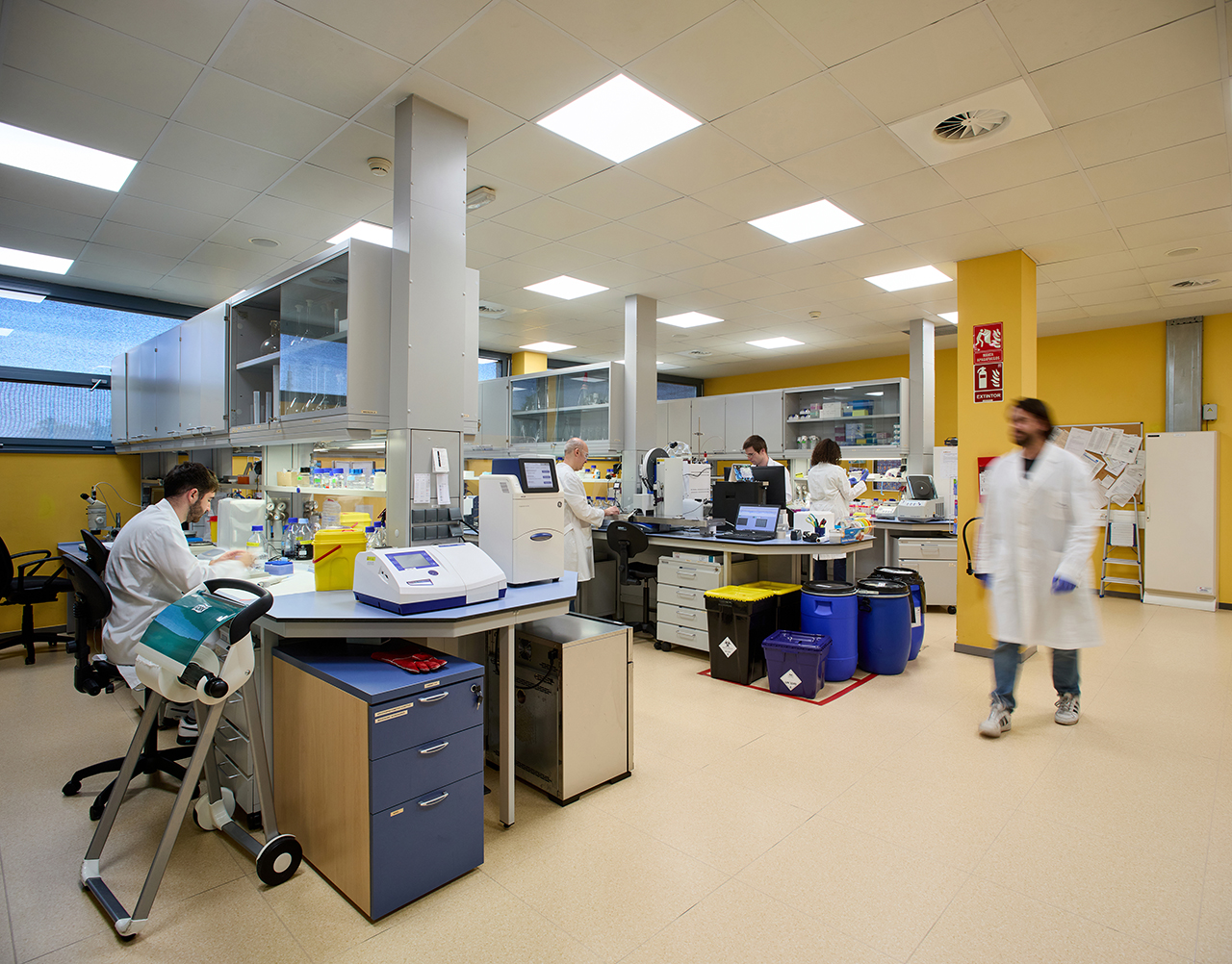Sample charger
The automatic sample changer of the beamline is a CATS from Irelec. The maximum capacity of the sample storage Dewar is 126 samples (9 pucks). See the picture of the EH (above) which shows the Pilatus detector, diffractometer (with mini-kappa mount) and sample changer (Irelec CATS, in yellow).
Caps/Vials
Only SPINE caps/vials are supported. In the case of the double gripper (Unipuck) the use of SPINE caps is mandatory (Molecular dimensions, Mitegen or Hampton SPINE caps) (see figure below). The use of other standards will cause serious collisions.

For more detailed information about the SPINE sample holder standard, please visit: https://instrumentation.embl.fr/spinesampleholder/
Besides, caps containing glue or ice in the inner part must be rejected when using the double gripper (Unipuck) to avoid collisions. Please, dry your caps properly to avoid water inside.

Pin length
22 mm pin length is strongly recommended, if you bring longer or shorter pins, make sure to bring an empty pin (sample) to test the position of the cryostream before mounting your samples. Any common brand of pins is allowed (Hampton, MD, etc)
Cassettes (pucks)
16-sample UNIPUCK cassettes (pucks/baskets) (preferred) or 10-sample SPINE (ESRF/EMBL) are supported for automatic mounting in the CATS sample changer. 6 UNIPUCK (96 samples) cassettes and 3 ESRF/EMBL cassettes (30 samples) can be loaded at a time.
Capillaries
Capillaries need to be mounted on a magnetic SPINE cap.
Crystallization plates
CrystalQuick™X crystallization plates are preferred to improve visualization and diffraction signal. Generic SBS plates are supported (still images only).
Back up system
External hard disk drive (preferred).Please bring your own external hard disk drive.
SFTP may also be possible depending on amount of data.
Download your results obtained with the automated data processing pipeline through ISPYB.
Typical software for data processing is available. Automatic processing with EDNA fast processing, autoPROC pipeline and XIA.
Wet laboratory
A wet laboratory is at your disposal which is close to the beamline to facilitate standard crystal manipulation and preparation. A Mosquito LCP for general crystal screening, a Dragonfly for setting up optimizations and a Formulatrix imager allowing remote visualization of the crystallization plates are available.
A complete list of the sample environment instrumentation and standards used
